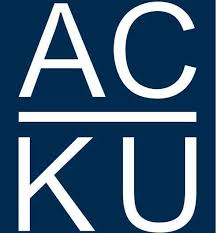Financing water supply and sanitation investments : utilizing risk mitigation instruments to bridge the financing gap / Aldo Baietti and Peter Raymond.
Material type: TextLanguage: Series: ; (Water Supply and Sanitation Sector Board discussion paper series ; paper no. 4)Publication details: Washington, D.C. : The World Bank, 2005.Description: vi, 38 p. : col. charts ; 28 cmSubject(s): DDC classification:
TextLanguage: Series: ; (Water Supply and Sanitation Sector Board discussion paper series ; paper no. 4)Publication details: Washington, D.C. : The World Bank, 2005.Description: vi, 38 p. : col. charts ; 28 cmSubject(s): DDC classification: - Pamphlet HD 4456 .B35 2005
| Item type | Current library | Call number | Status | Date due | Barcode | Item holds | |
|---|---|---|---|---|---|---|---|
 Books
Books
|
Afghanistan Centre at Kabul University | Pamphlet HD 4456 .B35 2005 (Browse shelf(Opens below)) | Available | 21513 | |||
 Books
Books
|
Afghanistan Centre at Kabul University | Available | 21514 |
“January 2005”.
“Includes bibliography”—(p. 29)
Contents: Acronyms and abbreviations—1. Summary—2. Introduction—3. Water supply and sanitation and the financing problem—4. Investment in water supply and sanitation infrastructure—5. IFI risk mitigation products and their utilization (2001-2003)—6. Foreign exchange risk—7. Constraints in the use of guarantees—8. A changing market—9. Push for fundamental reforms to create creditworthy utilities and subsovereigns—10. Deploying guarantees to meet the changing needs of the market—Bibliography—Annexes.
Summary: “Water supply is essential for growth, as well as for social well-being. It is probably the most difficult of all infrastructure services to substitute, and its absence or deficiency represents a particular burden on the poor. In the developing world, 2 out of every 10 people lack access to a safe water supply, and 5 out of 10 have inadequate sanitation. This means that worldwide, more than 1.1 billion people do not have access to safe drinking water, and roughly 2.4 billion are without adequate sanitation. Yet even these estimates understate the extent of the access gap. Service is poor, even in many countries that have water supply systems. For many consumers, piped water is often intermittent, and, when available, it is unsafe for drinking. In addition, sanitation facilities are often inadequate, overloaded, in disrepair, or unused. To improve the situation, the World Summit on Sustainable Development in 2002 specified the targets of the Millennium Development Goals, which aim to reduce by half the proportion of people without sustainable access to safe drinking water and basic sanitation by 2015. Success in this would mean providing an additional 1.5 billion people with access to safe and reliable water and about 2 billion people with basic sanitation services. To achieve these goals, annual investments in water supply and sanitation in developing countries would likely need to double from the historical level of US
